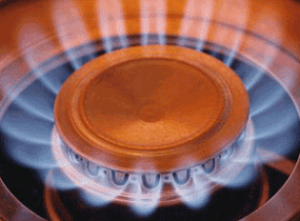 Natural gas trimmed a weekly decline as cold weather across the northern US spurred strong heating demand but gains were capped by expectations for a smaller-than-average inventory withdrawal last week.
Natural gas trimmed a weekly decline as cold weather across the northern US spurred strong heating demand but gains were capped by expectations for a smaller-than-average inventory withdrawal last week.
Natural gas for delivery in March rose 0.68% to $2.680 per million British thermal units by 9:30 GMT, having shifted in a daily range of $2.681-$2.660. The contract slid 3.34% yesterday to $2.662 and is down 0.3% for the week so far.
According to NatGasWeather.com, natural gas demand in the US through February 11th will be high compared to normal, but easing to moderate, with a warm weather trend for the west and central US, while the Northeast remains cool.
A cold blast which hit the northern US yesterday has pushed overnight lows into the single digits and below 0 degrees, driving very strong heating demand. Cooler temperatures have also infiltrated the Southeast but a rapid warm-up over the central and southern US on Friday into Saturday will be quick to push readings above the normal. Apart from the coastal states which will see high snow accumulations, the West will enjoy dry and warmer-than-usual weather throughout the week.
The central and southern US will be engulfed by higher readings this weekend and early next week as highs reach into the mid and high 70s, while a new weather system tracks across the Northeast and Great Lakes, bringing cool temperatures.
Next week, the countrys western and central regions will continue to experience near or warmer-than-usual temperatures, NatGasWeather.com reported, including over Texas. The Midwest and eastern US will see weather systems track over, bringing rain, snow and slightly cooler-than-normal temperatures, but the most threatening frigid Canadian air is not expected to push deeper south than the Great Lakes and Northeast.
Temperatures
According to AccuWeather.com, readings in New York on February 7th will range between 29 and 36 degrees, compared to the average 28-40, and will remain slightly lower than usual through the middle of February. Chicago will see the mercury plunge as low as 9 degrees today, 10 below usual, before warming up to the mostly seasonal 24-33 degrees on February 8th.
Down South, Houston will see highs range between 55 and 70 degrees on February 7th, above the usual 47-65, and will peak at 76 degrees the following two days, before easing to seasonal levels over the next week. On the West Coast, the high in Los Angeles tomorrow will be 72 degrees, 4 above usual, and readings are expected to max out in the 70s and lower 80s on February 12-18th.
Inventories
The Energy Information Administration reported last Thursday that US natural gas inventories declined by 94 billion cubic feet in the seven days through January 23rd, well below analysts’ projections for a withdrawal in the range of 108-113 bcf. Total gas held in US storage hubs amounted to 2.543 trillion cubic feet, narrowing the deficit to the five-year average inventories of 2.622 trillion to 3.0%, or 79 bcf, from 5.5% a week earlier. The surplus to the year-ago stockpiles level of 2.219 trillion cubic feet widened to 14.6% from 8.2% a week earlier.
Today’s report is also expected to reflect a draw below the average as last weeks widespread warmth is factored in, especially with highs over the central and southern US that reached well into the 70s. Analysts expect a decline in the range of 117-123 billion cubic feet. The five-year average withdrawal for the week ended January 30th is 165 bcf, while inventories declined by 259 bcf during the comparable period a year earlier.
This week’s drop, to be reflected in February 12th’s report, is likely to be much closer to the average as the recent and upcoming cold blasts over the North and East are factored in. However, this weekend and next week’s warm-up over the central, southern and western US is likely to lead to a much thinner withdrawal for the following report due at February 19th. Supplies through the third week of February basically stand a real chance of turning deficits to the five-year average into surpluses.
Pivot points
According to Binary Tribune’s daily analysis, March natural gas futures’ central pivot point stands at $2.697. In case the contract penetrates the first resistance level at $2.744 per million British thermal units, it will encounter next resistance $2.827. If breached, upside movement may attempt to advance to $2.874 per mBtu.
If the energy source drops below its first support level at $2.614 per mBtu, it will next see support at $2.567. If the second key support zone is breached, the power-station fuel’s downward movement may extend to $2.484 per mBtu.
In weekly terms, the central pivot point is at $2.765. The three key resistance levels are as follows: R1 – $2.892, R2 – $3.094, R3 – $3.221. The three key support levels are: S1 – $2.563, S2 – $2.436, S3 – $2.234.





